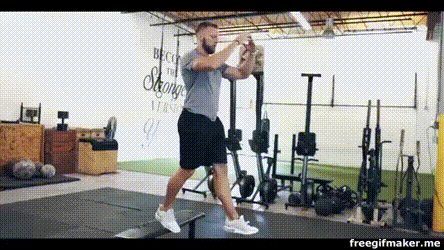Plyometric Training to Jump Higher (Part 2)
Just like strength, how you progress your plyometric training directly affects your ability to jump higher. In part 1 of this series (click here to see it), I gave you a template for phase one of a general plyometric tempo. Below, I’m going to lay out phase two, which will be an effective progression of the base of force absorption built in the first phase.

Note that these are guidelines for general plyometric training, aka, if I’m trying to build general athleticism. Although you can use these for sport-specific purposes, this general periodization is not catered to a specific athlete, or sport-specific.
Alright, let’s jump in.
Isometric/Transition Phase
In the first phase of our plyometric training, we focused on force absorption. The second phase is focused on harnessing that absorbed force and transitioning it into produced power as efficiently as possible. As such, we’ll focus on connecting high effort unilateral jumps, resisted connected jumps, and reactive jumps.
Working on these will help us spend less time on the ground, resulting in less energy loss, and more potential to jump higher
Unilateral Jumps
In the last phase, you performed high effort unilateral jumps rep-by-rep. During this phase, you’ll work on connecting these jumps, absorbing force, spending as little time on the ground as possible, and exploding off the ground.
You can, and should, do these jumps in multiple planes to develop your stability and explosiveness on one leg.
Connected Jumps
During phase 1, you performed low-level connected jumps to build energy efficiency in the ankle, knee, and hip. In this phase, you’ll progress those movements in the simplest way possible – by adding resistance.
It’s important to note that since your goal is to jump higher, you shouldn’t go too crazy on the weights. Multiple studies have found that, in relation to power, any weight added over 10% of your bodyweight has diminishing returns.
That being said, stick around the 15-25 lbs dumbbell range to maximize effectiveness.
Reactive Jumps
This is where you work that transition, or in more scientific terms, amortization, phase. Again, the transition phase is the time between the eccentric phase and the concentric phase of a movement. In our case, it’s the vertical jump. It’s absolutely critical that we keep this phase as short as possible if we want to jump higher.
We do that with reactive jumps.
One of my favorite ways to do this is after teaching an athlete how to depth jump, I teach them how to produce force after their depth jump.
Essentially, the force absorption movements you performed in the last phase will progress to reactive jumps.
Want More Tips on How To Jump Higher?

Want to learn what kind of strength training you should be doing to jump higher?
Or how to progress your plyometrics even further?
Or maybe even how to progress your weight training?
Check out my FREE Advanced Vertical Series where I dispel vertical jump myths, show you what you should be doing in the weight room to jump higher, and more.
Just mash that link below:
FREE ADVANCED VERTICAL SERIES (CLICK ME)



